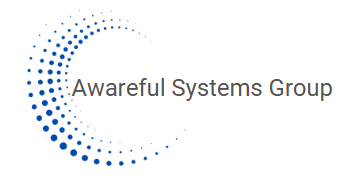Complexity and Systems
Ball, P. (2006). Critical mass: How one thing leads to another. New York: Farrar, Straus and Giroux.
Barabási, A.-L. (2010). Bursts: The hidden pattern behind everything we do. New York, N.Y: Dutton.
Barabási, A.-L. (2009). Linked: How everything is connected to everything else and what it means for business, science, and everyday life. New York: Plume.
Briggs, J. (1992). Fractals: The patterns of chaos. New York: Simon & Schuster.
Buchanan, M. (2013). Forecast: What physics, meteorology, and the natural sciences can teach us about economics. New York: Bloomsbury.
Buchanan, M. (2002). Nexus: Small worlds and the groundbreaking science of networks. New York: W.W. Norton.
Buchanan, M. (2007). The social atom: Why the rich get richer, cheaters get caught, and your neighbor usually looks like you. New York: Bloomsbury USA.
Capra, F. (1996). The web of life: A new scientific understanding of living systems. New York: Anchor Books.
Christakis, N. A., & Fowler, J. H. (2009). Connected: The surprising power of our social networks and how they shape our lives. New York: Little, Brown and Co.
Gladwell, M. (2000). The tipping point: How little things can make a big difference. Boston: Little, Brown.
Gribbin, J. (2004). Deep simplicity: Bringing order to chaos and complexity. New York: Random House.
Gunderson, L. H., & Holling, C. S. (2002). Panarchy: Understanding transformations in human and natural systems. Washington, DC: Island Press.
Holland, J. H. (1998). Emergence: From chaos to order. Reading, Mass: Addison-Wesley.
Johnson, S. (2001). Emergence: The connected lives of ants, brains, cities, and software. New York: Scribner.
Kauffman, S. A. (2008). Reinventing the sacred: A new view of science, reason and religion. New York: Basic Books.
Kelly, K. (1994). Out of control: The rise of neo-biological civilization. Reading, Mass: Addison-Wesley.
Kelso, J. A. S., & Engstrøm, D. A. (2006). The complementary nature. Cambridge, Mass: MIT Press.
Kelso, J. A. S., Mandell, A. J., Shlesinger, M. F., Haken, H., & Florida Atlantic University. (1988). Dynamic patterns in complex systems. Singapore: World Scientific.
Laughlin, R. B. (2005). A different universe: Reinventing physics from the bottom down. New York: Basic Books.
Lewin, R. (2000). Complexity: Life at the edge of chaos. University of Chicago Press.
McDaniel, R. R. (2005). Uncertainty and surprise in complex systems: Questions on working with the unexpected; with 8 tables. Berlin: Springer.
Miller, P. (2010). The smart swarm: How understanding flocks, schools, and colonies can make us better at communicating, decision making, and getting things done. New York: Avery.
Mitchell, M. (2009). Complexity: A guided tour. Oxford [England: Oxford University Press.
Newman, M. E. J., Barabási, A.-L., & Watts, D. J. (2006). The structure and dynamics of networks. Princeton, N.J: Princeton University Press.
Owen, H. (2008). Open space technology: A user’s guide. San Francisco, Calif: Berrett-Koehler Publishers.
Pascale, R. T., Sternin, J., & Sternin, M. (2010). The power of positive deviance: How unlikely innovators solve the world’s toughest problems. Boston, Mass: Harvard Business Press.
Scott, A. (2005). Encyclopedia of nonlinear science. New York: Routledge.
Strogatz, S. H. (2003). Sync: The emerging science of spontaneous order. New York: Hyperion.
Taleb, N. N. (2007). The black swan: The impact of the highly improbable. New York: Random House.
Taleb, N. N. (2012). Antifragile: Things that gain from disorder. New York: Random House.
Waldrop, M. M. (1992). Complexity: The emerging science at the edge of order and chaos. New York: Simon & Schuster.
Walleczek, J. (2000). Self-organized biological dynamics and nonlinear control: Toward understanding complexity, chaos and emergent function in living systems. Cambridge, UK: Cambridge University Press.
West, B. J., & Griffin, L. (2004). Biodynamics: Why the wirewalker doesn’t fall. Hoboken, N.J: Wiley-Liss.
Westley, F., Patton, M. Q., & Zimmerman, B. (2006). Getting to maybe: How the world is changed. Toronto: Random House Canada.
